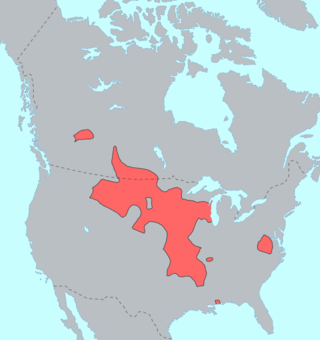Top Qs
Timeline
Chat
Perspective
Western Siouan languages
Language family native to North America From Wikipedia, the free encyclopedia
Remove ads
The Western Siouan languages, also called Siouan proper or simply Siouan,[1] are a large language family native to North America. They are closely related to the Catawban languages, sometimes called Eastern Siouan, and together with them constitute the Siouan (Siouan–Catawban) language family.
This article needs additional citations for verification. (February 2011) |
Linguistic and historical records indicate a possible southern origin of the Siouan people, with migrations over a thousand years ago from North Carolina and Virginia to Ohio. Some continued down the Ohio River, to the Mississippi and up to the Missouri. Others went down the Mississippi, settling in what is now Alabama, Mississippi and Louisiana. Others traveled across Ohio to what is now Illinois, Wisconsin, and Minnesota, home of the Dakota.
Remove ads
Family division
The Siouan family proper consists of some 18 languages and various dialects:
- Siouan
- Mandan †
- Nuptare
- Nuetare
- Missouri River Siouan (a.k.a. Crow–Hidatsa)
- Mississippi Valley Siouan (a.k.a. Central Siouan)
- Mitchigamea? †
- Dakotan (a.k.a. Sioux–Assiniboine–Stoney)
- Nakoda
- Assiniboine – 150 speakers
- Stoney – 3,200 speakers
- Sioux – 25,000 speakers
- Nakoda
- Chiwere-Winnebago
- Dhegihan
- Omaha–Ponca – 85 speakers
- Kansa-Osage
- Quapaw – 1 speaker
- Ohio Valley Siouan
- Mandan †
(†) – Extinct language
Another view of both the Dakotan and Mississippi Valley branches is to represent them as dialect continuums.
All the Virginia Siouan dialects listed here are thought to have been closely related to one another; the term Tutelo language is also used in reference to their common tongue.
Remove ads
Writing systems
There are two systems used to transcribe within this family:
- Latin alphabet used by a majority of these languages.
- Osage script, developed in 2005 by Herman Mongrain Lookout.[2] There are also considerations for the script to be extensively usable for other languages in the Dhegiha group to the extent of this family.[3]
See also
Bibliography
- Parks, Douglas R.; & Rankin, Robert L. (2001). "The Siouan languages", in R. J. DeMallie (Ed.), Handbook of North American Indians: Plains (Vol. 13, Part 1, pp. 94–114). W. C. Sturtevant (Gen. Ed.). Washington, D.C.: Smithsonian Institution. ISBN 0-16-050400-7.
- Rood, David S.; & Taylor, Allan R. (1996). "Sketch of Lakhota, a Siouan language", in Handbook of North American Indians: Languages (Vol. 17, pp. 440–482). Washington DC: Smithsonian Institution.
- Ullrich, Jan. (2008). New Lakota Dictionary: Incorporating the Dakota Dialects of Santee–Sisseton and Yankton–Yanktonai (Lakota Language Consortium). ISBN 0-9761082-9-1.
Remove ads
References
External links
Wikiwand - on
Seamless Wikipedia browsing. On steroids.
Remove ads

